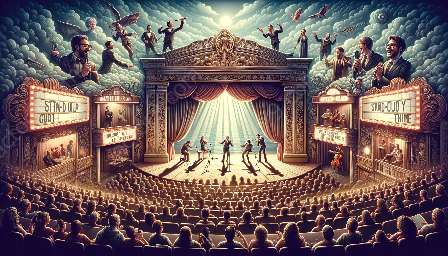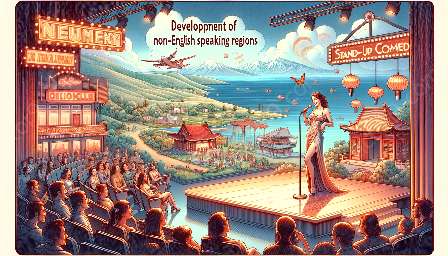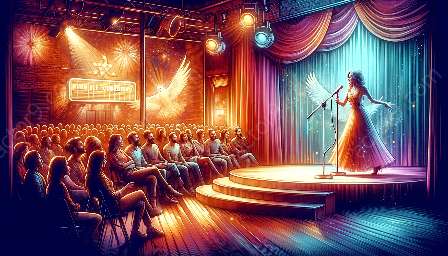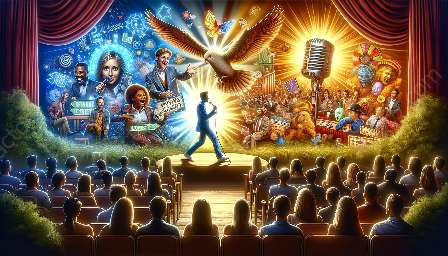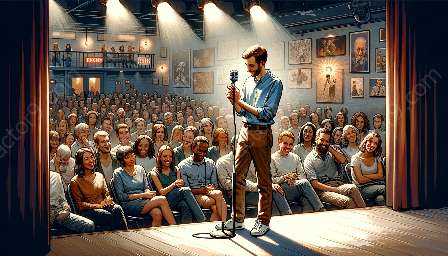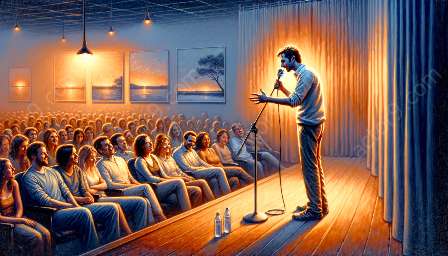Stand-up comedy is an art form that requires a combination of wit, timing, and creativity to make people laugh. One of the key elements that can greatly enhance a stand-up comedian's performance is the use of physical and vocal characterizations for comedic effect. By incorporating these elements, comedians can elevate their humor and engage their audience more effectively.
Understanding Physical and Vocal Characterizations
Physical characterizations involve using body movements, gestures, and facial expressions to convey humor and enhance the delivery of jokes. It can involve exaggerating movements, using props, or even adopting certain postures and poses to create comedic effects. Vocal characterizations, on the other hand, involve varying the pitch, tone, and pace of speech to add depth and humor to a performance. This can include mimicking accents, imitating voices, or using sound effects to enhance the comedic content.
Importance of Physical and Vocal Characterizations in Stand-Up Comedy
Physical and vocal characterizations are crucial in stand-up comedy as they help comedians express their comedic ideas more vividly and dynamically. By mastering these techniques, comedians can make their jokes more relatable and engaging, leading to a stronger connection with the audience. Moreover, physical and vocal characterizations also serve to break the monotony of the performance and keep the audience's attention focused on the comedian's act.
Using Improvisation to Enhance Physical and Vocal Characterizations
Improvisation plays a significant role in stand-up comedy, allowing comedians to adapt to unexpected situations and interact with the audience in real-time. When incorporating physical and vocal characterizations, improvisation can add spontaneity and freshness to the performance. Comedians can create new physical and vocal characterizations on the spot, respond to audience reactions, and adjust their delivery based on the energy in the room.
Techniques for Incorporating Physical and Vocal Characterizations
1. Body Language: Comedians can use exaggerated gestures, animated movements, and expressive facial expressions to complement their jokes and bring humor to their performance.
2. Vocal Variety: By varying the pitch, tone, volume, and speed of speech, comedians can create different characters and personas, enriching the comedic narrative and adding depth to their act.
3. Prop Usage: Props can be used to support physical characterizations and add visual humor to the performance. Comedians can manipulate props creatively to enhance their comedic effect.
4. Sound Effects: Incorporating sound effects through vocalizations or using audio aids can amplify the humor and bring an added layer of entertainment to the act.
Case Studies of Successful Incorporation
Several renowned stand-up comedians have successfully integrated physical and vocal characterizations for comedic effect into their acts. For example, Jim Carrey is known for his exceptional use of physical comedy, combining exaggerated movements and facial expressions to deliver hilarious performances. Additionally, Robin Williams was a master of vocal characterizations, effortlessly switching between voices and accents to create diverse and amusing characters in his stand-up routines.
Conclusion
Incorporating physical and vocal characterizations for comedic effect in stand-up comedy is a valuable skill that can significantly enhance a comedian's performance. By understanding the importance of these characterizations, leveraging improvisation, and mastering various techniques, comedians can captivate their audience and deliver memorable comedic experiences.


